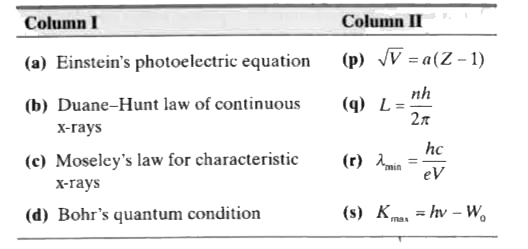Text Solution
Verified by Experts
The correct Answer is:
Topper's Solved these Questions
PHOTONS AND MATTER WAVES
RESNICK AND HALLIDAY|Exercise PRACTICE QUESTIONS(Integer Type)|4 VideosPHOTONS AND MATTER WAVES
RESNICK AND HALLIDAY|Exercise PRACTICE QUESTIONS (Link Comprehension)|17 VideosOSCILLATIONS
RESNICK AND HALLIDAY|Exercise Practice Questions|57 VideosRELATIVITY
RESNICK AND HALLIDAY|Exercise PRACTICE QUESTIONS (Integer Type)|5 Videos
RESNICK AND HALLIDAY-PHOTONS AND MATTER WAVES-PRACTICE QUESTIONS(Matrix - Match)
- Match the statements in Column I labeled as (a), (b), (c), and (d) wit...
Text Solution
|
- Match the statements in Column I labeled as (a), (b), (c), and (d) wit...
Text Solution
|
- de-Broglie equation gives the relation between particle and wave natur...
Text Solution
|
- de-Broglie equation gives the relation between particle and wave natur...
Text Solution
|
- de-Broglie equation gives the relation between particle and wave natur...
Text Solution
|
